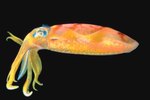
Though they are known for their tails that boast a powerful barb with the ability to kill, stingrays will unleash the power of their barbed tails only when under attack. They prefer to spend much of their time just lounging around in shallow, temperate water. The majority of the time, these lazy creatures of the sea tend to be very gentle, even allowing scuba divers and snorkelers to get up close.
Powerful, Venemous Tail
Trailing behind a stingray is a long tail with serrated edges. The tail ends in a sharpened point. When threatened, the stingray can use his barbed tail to attack predators, such as sharks and larger stingrays. When predators come near, he may also release venom from the underside of his tail. The venom is powerful and has the ability to kill other organisms even after the stingray has died.
Lifestyle
For much of his day, the stingray will hang out in shallow waters, sometimes burrowing under the sand. Many species blend right in with the ocean floor and may don a beautiful blue color similar to it. This helps them camouflage themselves against predators. Stingrays will move from time to time, but it's usually only to get food or when they are moved by the changing tide. When in motion, their bodies may undulate like gentle waves. Other species move by making flapping motions, similar to birds.
Body Description
Stingrays are fairly round, with two eyes are located on top of their flat, disk-like bodies. However, researchers believe stingrays do not rely on their eyes when it comes to hunting because they also have electrical sensors around their mouths that sense potential prey. They use their teeth to crush their food. Many stingrays' diets consist of mollusks, oysters and clams. A stingray's mouth and gill slits can be found on her underbelly.
Behavior
Although stingrays have the power and the ability to be incredibly dangerous, they are not aggressive. In fact, many marine biologists consider them shy, docile creatures. When they sense predators coming their way, their first instinct is usually to swim in the other direction. When they use their barb and venom, it is usually because they are being attacked.
References
Resources
Photo Credits
-
NA/AbleStock.com/Getty Images
Writer Bio
Pamela Miller has been writing for health, beauty and animal health/welfare publications for seven years. Miller holds a Bachelor of Science in Organizational Communication from MTSU.




